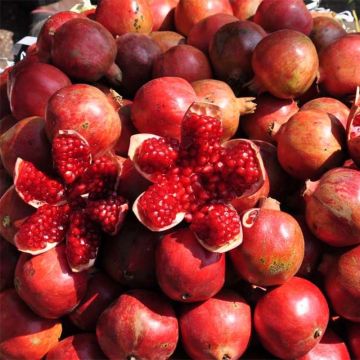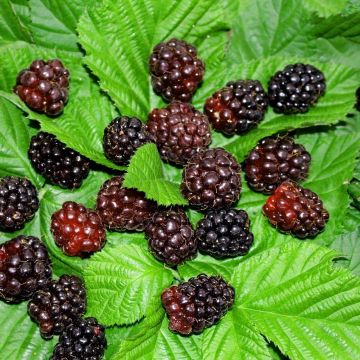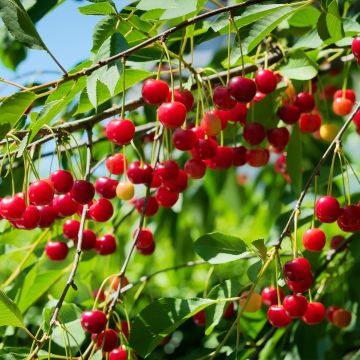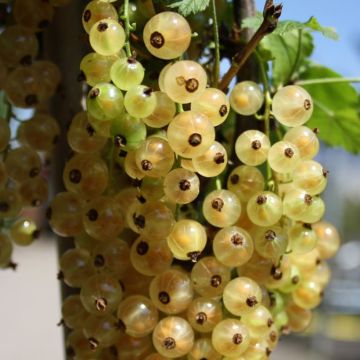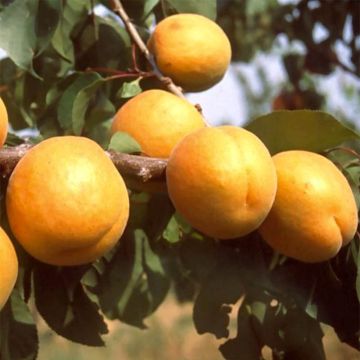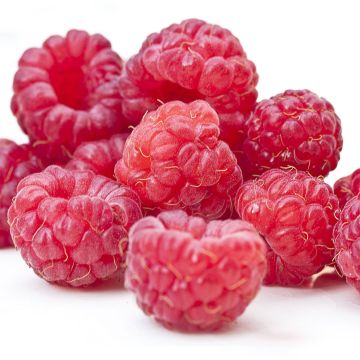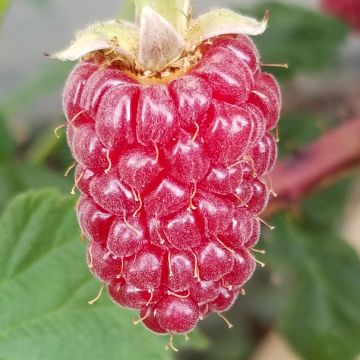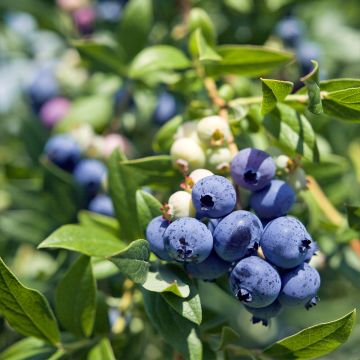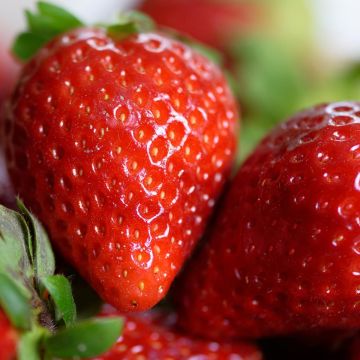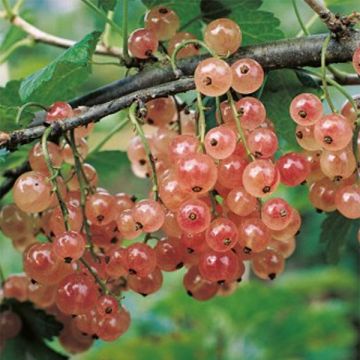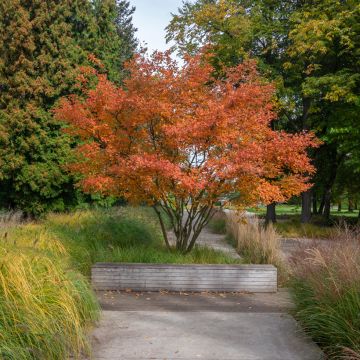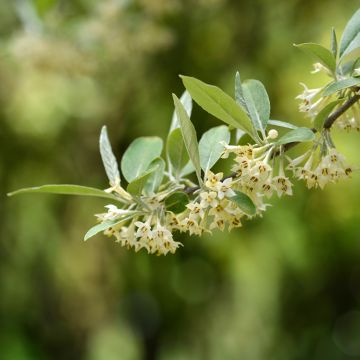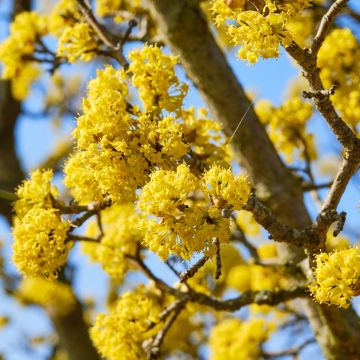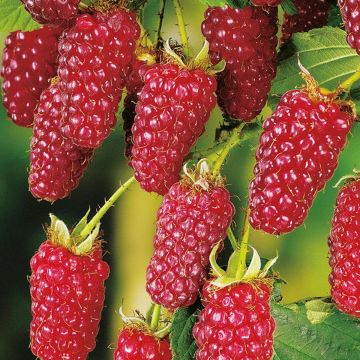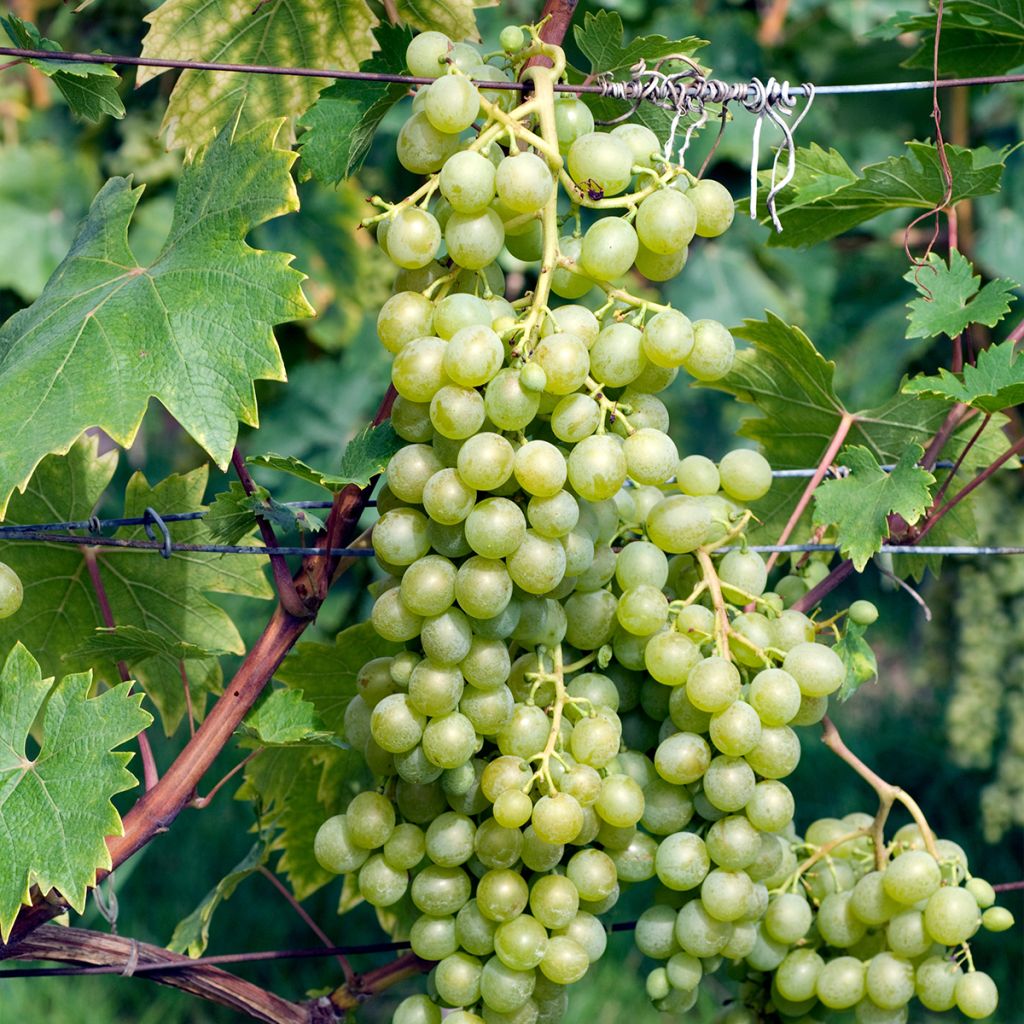

Vitis vinifera Evita - Grape vine
Vitis vinifera Evita - Grape vine
Vitis vinifera EVITA
Common Grape Vine, European Grape, Wine Grape
Special offer!
Receive a €20 voucher for any order over €90 (excluding delivery costs, credit notes, and plastic-free options)!
1- Add your favorite plants to your cart.
2- Once you have reached €90, confirm your order (you can even choose the delivery date!).
3- As soon as your order is shipped, you will receive an email containing your voucher code, valid for 3 months (90 days).
Your voucher is unique and can only be used once, for any order with a minimum value of €20, excluding delivery costs.
Can be combined with other current offers, non-divisible and non-refundable.
Home or relay delivery (depending on size and destination)
Schedule delivery date,
and select date in basket
This plant carries a 6 months recovery warranty
More information
We guarantee the quality of our plants for a full growing cycle, and will replace at our expense any plant that fails to recover under normal climatic and planting conditions.
Description
The Evita grape is a recent variety of vine that produces a sweet, golden yellow table grape with fruity notes. The large clusters of round to elliptical berries are not very susceptible to the main vine diseases. These grapes have the advantage of having almost no seeds. This vine will thrive in most neutral to limestone soils that are well-drained and sunny. It is also resistant to cold temperatures.
The wine grape (Vitis vinifera) grew wild over 5000 years ago in North and Central America, Europe, and Central and Eastern Asia. The subspecies sylvestris still exists, which is a climbing liana that grows on the edge of forests and can reach great heights in trees. Its introduction to France for cultivation was done by the Phoenicians in Provence around 600 BC. The current varieties, called grape varieties in the case of vines, are classified under the subspecies vinifera (although there are other cultivated species, but they are very minor).
Evita is a recent hybrid obtained by two Austrian breeders, G.P. Weiss and G. Mayer, and introduced to the market in 2008. This table grape variety is the result of cross-breeding between La Perlette, a white seedless grape obtained in 1936 in the United States (with one of its parents being La Sultanine, a variety often consumed as raisins due to its high sweetness), and Zala Gyöngye, a Hungarian variety from 1957. This interspecific hybrid carries genes from Vitis vinifera, as well as Vitis berlandieri, the species that helped save the vine from the devastating phylloxera by serving as a resistant rootstock, and Vitis rupestris, another American vine species.
A vigorous climbing shrub with an upright habit, the Evita vine can easily reach a height of 4m (13ft) with a spread of 3m (10ft) if not pruned. It needs to be trained on a trellis or arbor, which it can cover quite quickly. Its foliage is a beautiful matte light green, with entire leaves that are generally round or three to five-lobed, with finely toothed edges. The herbaceous branches bear long tendrils that allow the plant to cling to its support. Like most grapes, it is self-fertile. Its flowering occurs in May-June depending on the year and region, offering very small greenish flowers gathered in fairly large conical and cylindrical clusters.
These flowers develop into large to very large clusters, suspended on long peduncles. The berries are medium to large, spherical to slightly elliptical, turning golden yellow at maturity and ready to be harvested in September and even October, earlier or later depending on the region. With medium-thick skin and firm, crunchy, and moderately juicy flesh, these berries are sweet with fruity aromas. They have inherited the low quantity of seeds from one of their parents. This variety is less susceptible to grey rot, as well as powdery mildew and downy mildew, which are serious diseases for the vine. It is useful to perform summer green pruning to remove some leaves so that the grapes are well exposed to the sun and can acquire that beautiful golden colour, which is a guarantee of their taste quality.
The Evita grape can be consumed as a table grape or used to make juice, for example in a vitamin-packed fruit cocktail for breakfast. In general, grapes are rich in B vitamins, a source of fiber and manganese, and they are well-endowed with antioxidants. They are also believed to play a role in preventing cardiovascular diseases, and above all, they are a healthy, natural, and delicious dessert. To create original fruit salads, sow Love in a Cage or Peruvian Ground Cherry (Physalis peruviana) at the end of spring to harvest its amazing orange fruits from August to October. Or try the Kiwi, a variety of Actinidia arguta, with fruits rich in vitamin C.
Report an error about the product description
Vitis vinifera Evita - Grape vine in pictures
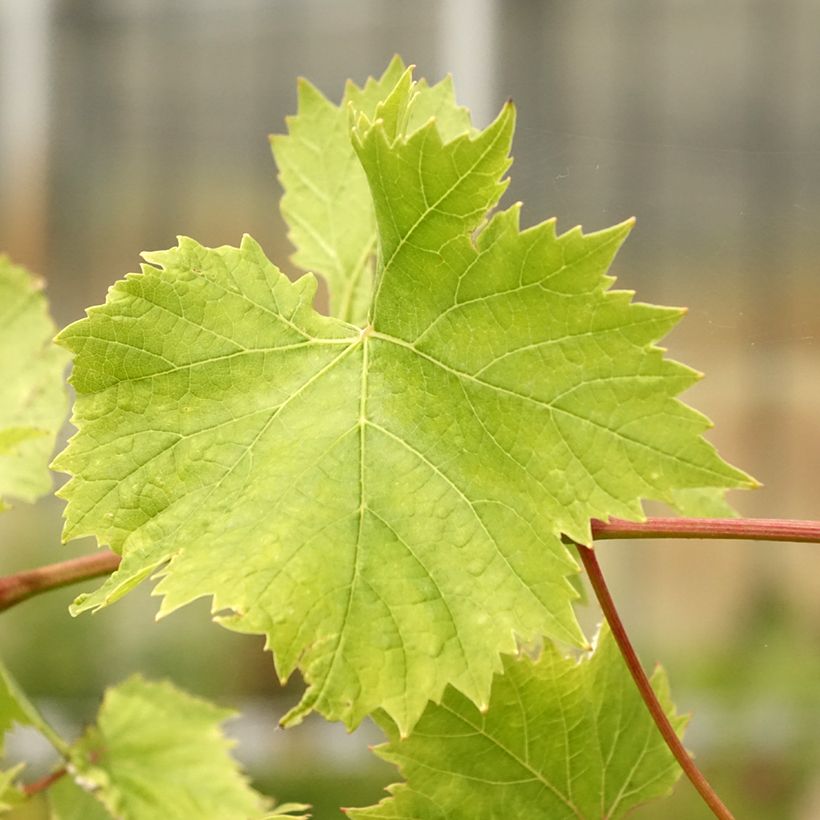

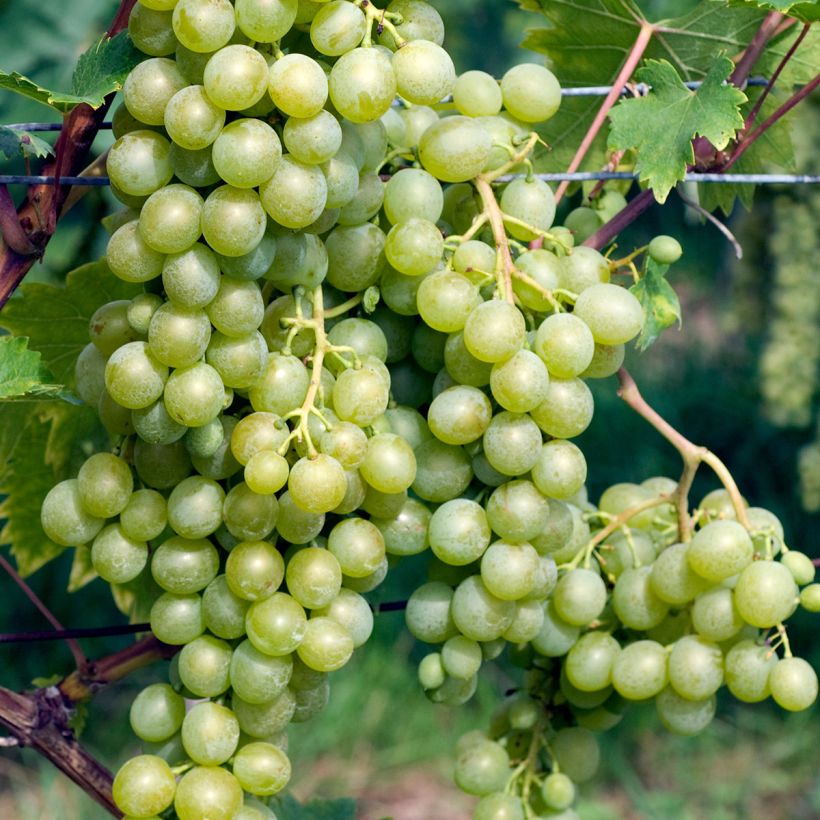

Plant habit
Fruit
Flowering
Foliage
Botanical data
Vitis
vinifera
EVITA
Vitaceae
Common Grape Vine, European Grape, Wine Grape
Cultivar or hybrid
Other Fruit trees A to Z
View all →Planting and care
Since the devastation caused by phylloxera at the end of the 19th century, the vine is obligatorily grafted onto different resistant rootstocks adapted to different types of soil. These rootstocks come from American varieties naturally armed against this formidable parasite, which itself originates from America.
Plant the Evita vine in autumn, in a deep, well-drained soil, even stony, clay, and chalky, knowing that the vine is not very demanding regarding the chemical nature of the soil. It is capable of adapting to moderately acidic soil (up to pH 6 approximately, as below this level there are assimilation blockages of certain trace elements), neutral and chalky up to pH 8.5 approximately (knowing that in this case, it is actually the excess of active lime that is detrimental).
Plant it in a sunny location, sheltered from strong, cold, and dry winds. This variety can withstand winter frost, it is hardy down to -20°/-25 °C. Incorporate 3 or 4 handfuls of fertiliser for fruit trees and 2 kg of composted manure per vine into the planting soil. Be careful, the roots should not be in contact with the manure. After planting, prune above 2 large buds (buds) to obtain the growth of two branches. Keep the most vigorous one and tie it to a stake. This will be followed by training pruning.
The vine does not require regular fertiliser application for good yield, on the contrary. In overly rich soil, vegetative growth (leaves) will develop to the detriment of fruiting. Enrich the soil with potash slag, crushed horn, or iron chelate, only every 2-3 years.
This variety is not very susceptible to the classic vine diseases, such as downy mildew, powdery mildew, and grey rot.
Planting period
Intended location
Care
This item has not been reviewed yet - be the first to leave a review about it.
Similar products
Haven't found what you were looking for?
Hardiness is the lowest winter temperature a plant can endure without suffering serious damage or even dying. However, hardiness is affected by location (a sheltered area, such as a patio), protection (winter cover) and soil type (hardiness is improved by well-drained soil).

Photo Sharing Terms & Conditions
In order to encourage gardeners to interact and share their experiences, Promesse de fleurs offers various media enabling content to be uploaded onto its Site - in particular via the ‘Photo sharing’ module.
The User agrees to refrain from:
- Posting any content that is illegal, prejudicial, insulting, racist, inciteful to hatred, revisionist, contrary to public decency, that infringes on privacy or on the privacy rights of third parties, in particular the publicity rights of persons and goods, intellectual property rights, or the right to privacy.
- Submitting content on behalf of a third party;
- Impersonate the identity of a third party and/or publish any personal information about a third party;
In general, the User undertakes to refrain from any unethical behaviour.
All Content (in particular text, comments, files, images, photos, videos, creative works, etc.), which may be subject to property or intellectual property rights, image or other private rights, shall remain the property of the User, subject to the limited rights granted by the terms of the licence granted by Promesse de fleurs as stated below. Users are at liberty to publish or not to publish such Content on the Site, notably via the ‘Photo Sharing’ facility, and accept that this Content shall be made public and freely accessible, notably on the Internet.
Users further acknowledge, undertake to have ,and guarantee that they hold all necessary rights and permissions to publish such material on the Site, in particular with regard to the legislation in force pertaining to any privacy, property, intellectual property, image, or contractual rights, or rights of any other nature. By publishing such Content on the Site, Users acknowledge accepting full liability as publishers of the Content within the meaning of the law, and grant Promesse de fleurs, free of charge, an inclusive, worldwide licence for the said Content for the entire duration of its publication, including all reproduction, representation, up/downloading, displaying, performing, transmission, and storage rights.
Users also grant permission for their name to be linked to the Content and accept that this link may not always be made available.
By engaging in posting material, Users consent to their Content becoming automatically accessible on the Internet, in particular on other sites and/or blogs and/or web pages of the Promesse de fleurs site, including in particular social pages and the Promesse de fleurs catalogue.
Users may secure the removal of entrusted content free of charge by issuing a simple request via our contact form.
The flowering period indicated on our website applies to countries and regions located in USDA zone 8 (France, the United Kingdom, Ireland, the Netherlands, etc.)
It will vary according to where you live:
- In zones 9 to 10 (Italy, Spain, Greece, etc.), flowering will occur about 2 to 4 weeks earlier.
- In zones 6 to 7 (Germany, Poland, Slovenia, and lower mountainous regions), flowering will be delayed by 2 to 3 weeks.
- In zone 5 (Central Europe, Scandinavia), blooming will be delayed by 3 to 5 weeks.
In temperate climates, pruning of spring-flowering shrubs (forsythia, spireas, etc.) should be done just after flowering.
Pruning of summer-flowering shrubs (Indian Lilac, Perovskia, etc.) can be done in winter or spring.
In cold regions as well as with frost-sensitive plants, avoid pruning too early when severe frosts may still occur.
The planting period indicated on our website applies to countries and regions located in USDA zone 8 (France, United Kingdom, Ireland, Netherlands).
It will vary according to where you live:
- In Mediterranean zones (Marseille, Madrid, Milan, etc.), autumn and winter are the best planting periods.
- In continental zones (Strasbourg, Munich, Vienna, etc.), delay planting by 2 to 3 weeks in spring and bring it forward by 2 to 4 weeks in autumn.
- In mountainous regions (the Alps, Pyrenees, Carpathians, etc.), it is best to plant in late spring (May-June) or late summer (August-September).
The harvesting period indicated on our website applies to countries and regions in USDA zone 8 (France, England, Ireland, the Netherlands).
In colder areas (Scandinavia, Poland, Austria...) fruit and vegetable harvests are likely to be delayed by 3-4 weeks.
In warmer areas (Italy, Spain, Greece, etc.), harvesting will probably take place earlier, depending on weather conditions.
The sowing periods indicated on our website apply to countries and regions within USDA Zone 8 (France, UK, Ireland, Netherlands).
In colder areas (Scandinavia, Poland, Austria...), delay any outdoor sowing by 3-4 weeks, or sow under glass.
In warmer climes (Italy, Spain, Greece, etc.), bring outdoor sowing forward by a few weeks.































